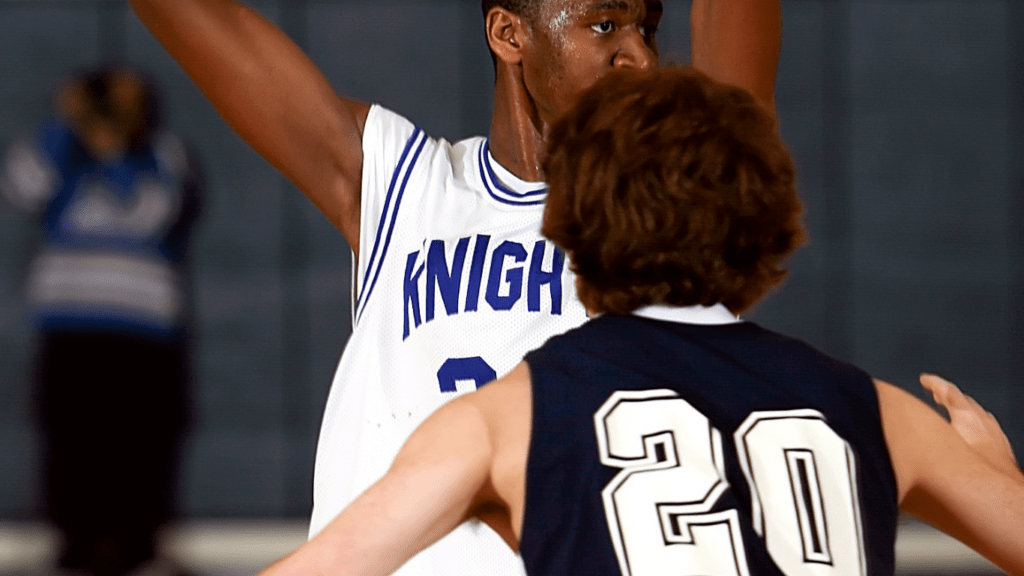As a passionate NBA enthusiast, I’ve always been captivated by the art of defense in basketball. In the fast-paced world of the NBA, where high-flying dunks and three-pointers often steal the spotlight, it’s the defensive stalwarts who often go unrecognized.
In this article, we shine a light on the unsung heroes of the NBA – the defensive players who are the backbone of their teams, making a significant impact on the game. From lockdown defenders who can shut down the opposing team’s star player to shot-blockers who protect the rim with ferocity, these players possess a unique skill set that sets them apart.
Their ability to read the game, anticipate plays, and disrupt the flow of the offense is truly a sight to behold. Join me as we delve into the world of the best defensive players in the NBA and celebrate their invaluable contributions to the game we love.
The Impact of Defensive Players in the NBA
Discussing the impact of defensive players in the NBA sheds light on their invaluable contributions to the game. Lockdown defenders and shot-blockers are pivotal in disrupting opposing offenses, significantly affecting their teams’ success.
It’s essential to recognize and appreciate the significant roles these unsung heroes play in the high-speed realm of basketball.
Top Defensive Players in the NBA
Elite Shot Blockers
As a basketball enthusiast, I appreciate the impact elite shot blockers have on the game. They serve as a defensive wall, deterring opponents from driving to the hoop and altering shots with their exceptional timing and vertical leap.
Players like Rudy Gobert and Anthony Davis showcase the importance of rim protection, often making it challenging for offenses to score in the paint.
Lockdown Perimeter Defenders
When it comes to lockdown perimeter defenders, I admire their ability to shut down the opposition’s best scorers. These players excel at on-ball defense, using their footwork, quick hands, and defensive IQ to hound shooters and limit their scoring opportunities.
Names like Kawhi Leonard and Jrue Holiday come to mind, showcasing how crucial perimeter defense is in disrupting the flow of opposing offenses.
Versatile Defensive Playmakers
Versatile defensive playmakers are instrumental in modern NBA systems, as they can guard multiple positions effectively. Players like Draymond Green and Ben Simmons exemplify this role by seamlessly switching and providing help defense when needed. Their defensive versatility allows teams to adjust dynamically to different offensive schemes, making them invaluable assets on the court.
Key Metrics for Evaluating Defensive Performance
In assessing defensive prowess in the NBA, it’s essential to consider key performance indicators that offer insights into a player’s impact on the court. These metrics provide a comprehensive view of a player’s defensive abilities and contributions to their team.
1. Defensive Rating
Defensive rating is a crucial metric that quantifies a player’s effectiveness in preventing their opponent from scoring. It measures how many points a player allows per 100 possessions they are on the court. A lower defensive rating indicates better defensive performance.
2. Block Percentage
Block percentage is a valuable statistic that reflects a player’s ability to block shots. It calculates the percentage of opponent field goal attempts that a player blocks while on the court. A high block percentage signifies exceptional shot-blocking skills.
3. Steal Percentage
Steal percentage measures a player’s capacity to force turnovers by stealing the ball from opponents. It computes the percentage of opponent possessions that end with a steal by the player. A higher steal percentage indicates superior defensive instincts and active hands.
4. Deflection Metrics
Deflections represent a player’s disruptive impact on the opponent’s offense by deflecting passes or shots. Tracking deflections provides an indication of a player’s ability to disrupt plays and create turnovers, contributing to their team’s defensive effectiveness.
5. On-Ball and Off-Ball Defense
Assessing a player’s performance in on-ball and off-ball defense is crucial for understanding their overall defensive capabilities. On-ball defense refers to a player’s ability to guard their assigned opponent effectively, while off-ball defense involves defensive actions away from the ball, such as help defense and rotations.
Defensive win shares quantify a player’s contribution to their team’s victories through their defensive performance. It calculates the number of wins a player contributes based on their defensive efforts. A higher defensive win shares value indicates a more impactful defensive player.
By considering these key metrics for evaluating defensive performance, basketball enthusiasts and analysts can gain a more nuanced understanding of the valuable contributions made by the best defensive players in the NBA.
Strategies Employed by Defensive Stoppers
Exploring the strategies used by defensive stoppers, it’s essential to acknowledge their diverse skill sets that make them invaluable assets to their teams. These players employ a combination of techniques tailored to disrupt opponents’ offensive plays and neutralize their scoring threats effectively. Below are the key strategies implemented by defensive stoppers in the NBA:
- On-Ball Defense Techniques: Engaging in tight on-ball defense, I make it challenging for offensive players to drive to the basket or create open shooting opportunities. By maintaining a low stance, active hands, and quick footwork, I aim to impede the progress of the opposing player and force them into unfavorable shot selections.
- Off-Ball Defensive Awareness: Displaying keen off-ball defensive awareness, I anticipate passes, cuts, and screens to swiftly rotate and provide help defense. By communicating with teammates and reading the offensive plays, I strive to disrupt the flow of the opponent’s offense and prevent easy scoring opportunities.
- Shot Blocking and Altering: Utilizing my shot-blocking abilities, I seek to intimidate opposing players driving to the rim and alter their shot trajectories. By timing my jumps correctly and positioning myself effectively near the basket, I aim to deter shot attempts and force opponents to rethink their offensive strategies.
- Defensive Communication: Emphasizing the importance of defensive communication, I ensure constant verbal cues and signals with my teammates to coordinate switches, rotations, and help defense. By effectively communicating defensive assignments and adjustments, I contribute to a cohesive defensive unit that thrives on collective awareness and solidarity.
- Adaptive Defensive Approaches: Employing adaptive defensive approaches, I tailor my strategies based on the strengths and tendencies of the player I am guarding. Whether defending a post player, a perimeter shooter, or a playmaker, I adjust my positioning, contesting angles, and defensive pressure to neutralize their offensive impact and provide a versatile defensive presence.
By mastering these strategic elements and continuously refining my defensive skills, I actively contribute to my team’s success on the defensive end and play a crucial role in stifling opponents’ scoring efforts. Through a combination of tenacity, intelligence, and versatility, defensive stoppers make a lasting impact on the outcome of NBA games and elevate the overall defensive performance of their respective teams.






